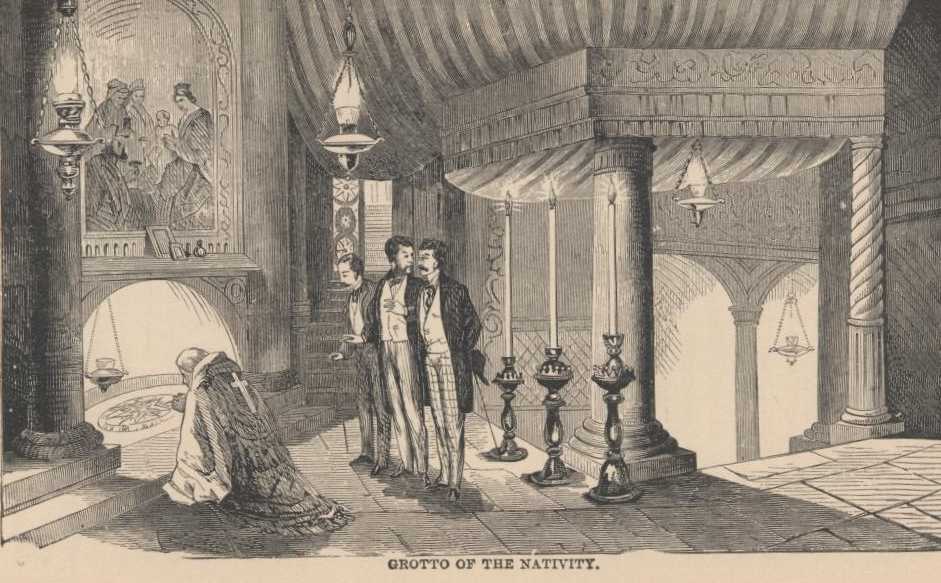In the huge Church of the Nativity, in Bethlehem, built fifteen hundred years ago by the inveterate St. Helena, they took us below ground, and into a grotto cut in the living rock. This was the “manger” where Christ was born. A silver star set in the floor bears a Latin inscription to that effect. It is polished with the kisses of many generations of worshiping pilgrims. The grotto was tricked out in the usual tasteless style observable in all the holy places of Palestine. As in the Church of the Holy Sepulchre, envy and uncharitableness were apparent here. The priests and the members of the Greek and Latin churches can not come by the same corridor to kneel in the sacred birthplace of the Redeemer, but are compelled to approach and retire by different avenues, lest they quarrel and fight on this holiest ground on earth.

I have no “meditations,” suggested by this spot where the very first “Merry Christmas!” was uttered in all the world, and from whence the friend of my childhood, Santa Claus, departed on his first journey, to gladden and continue to gladden roaring firesides on wintry mornings in many a distant land forever and forever. I touch, with reverent finger, the actual spot where the infant Jesus lay, but I think—nothing.
You can not think in this place any more than you can in any other in Palestine that would be likely to inspire reflection. Beggars, cripples and monks compass you about, and make you think only of bucksheesh when you would rather think of something more in keeping with the character of the spot.
I was glad to get away, and glad when we had walked through the grottoes where Eusebius wrote, and Jerome fasted, and Joseph prepared for the flight into Egypt, and the dozen other distinguished grottoes, and knew we were done. The Church of the Nativity is almost as well packed with exceeding holy places as the Church of the Holy Sepulchre itself. They even have in it a grotto wherein twenty thousand children were slaughtered by Herod when he was seeking the life of the infant Saviour.
We went to the Milk Grotto, of course—a cavern where Mary hid herself for a while before the flight into Egypt. Its walls were black before she entered, but in suckling the Child, a drop of her milk fell upon the floor and instantly changed the darkness of the walls to its own snowy hue. We took many little fragments of stone from here, because it is well known in all the East that a barren woman hath need only to touch her lips to one of these and her failing will depart from her. We took many specimens, to the end that we might confer happiness upon certain households that we wot of.